MaryAnn Bernal's Blog, page 158
August 9, 2015
History Trivia - Leonidas and his Spartan army defeated at Thermopylae
August 9
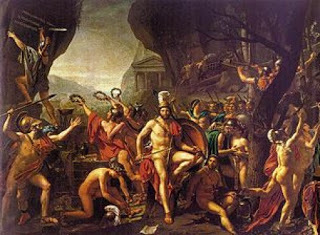
480 BC The Persian army defeated Leonidas and his Spartan army at Thermopylae, Persia.
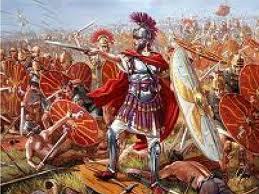
48 BC – Caesar's civil war: Battle of Pharsalus (Greece) – Julius Caesar decisively defeated Pompey at Pharsalus and Pompey fled to Egypt where he was later murdered. As a result Caesar had absolute control of Rome.
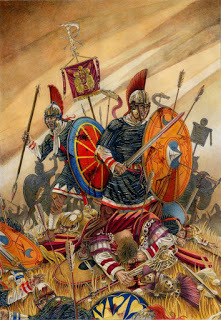
378 Gothic War: Battle of Adrianople – A large Roman army led by Emperor Valens was defeated by the Visigoths in present-day Turkey. Valens was killed along with over half of his army.

480 BC The Persian army defeated Leonidas and his Spartan army at Thermopylae, Persia.

48 BC – Caesar's civil war: Battle of Pharsalus (Greece) – Julius Caesar decisively defeated Pompey at Pharsalus and Pompey fled to Egypt where he was later murdered. As a result Caesar had absolute control of Rome.

378 Gothic War: Battle of Adrianople – A large Roman army led by Emperor Valens was defeated by the Visigoths in present-day Turkey. Valens was killed along with over half of his army.
Published on August 09, 2015 01:30
August 8, 2015
Did defenders of castles really pour boiling oil down on attackers?
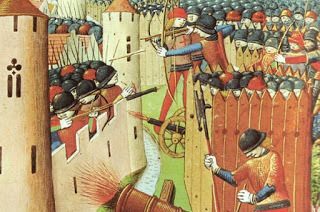
Siege towers and cannon can be seen in this depiction of the Siege of Orleans but no boiling oil
History Extra
Defenders facing death if their castle fell would have used whatever came to hand to drive off their enemies. History Revealed magazine investigates...
It is a common image that springs to mind when thinking of medieval warfare, and there is evidence that it was used to deter attackers. The Jewish defenders of Yodfat in AD 67 poured hot oil on the Roman besiegers, and heated oil is also mentioned as being used against the English at Orleans in 1428-29.
But oil was a valuable resource and it was probably too scarce to be anything other than an occasional weapon.
In fact, there was no shortage of other cheaper, and more plentiful, alternatives. Defenders would hurl down rocks, stones or even pieces of their own wall, or pour down boiling water or heated sand. Attackers might also be blinded with quicklime, a kind of medieval mustard gas that became caustic when it came in contact with anything wet.
They could be burned by Greek fire, a mixture of resin, pitch, sulphur and naptha, which was notoriously hard to extinguish. In 1216, the French defenders of Beaucaire Castle lowered a sack of burning sulphur, which drove off the attackers with its noxious fumes.
However the prize for ingenuity has to go to the defenders of Chester who, in 905, are said to have inflicted a stinging defeat on the Vikings by dropping the town’s beehives on them.
Published on August 08, 2015 06:51
In a nutshell: the Dark Ages
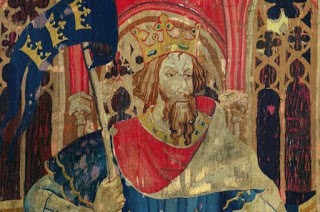
History Extra
Historians are in the dark about a great swathe of western European history, for which there is limited written record. History Revealed magazine investigates...
What were the Dark Ages?
The Dark Ages is a widely-used expression that normally refers to the period after the collapse of the western half of the Roman Empire in AD 476. Modern historians don’t always like to use this phrase because of its negative connotations.
How did the expression come about?
It seems to have originated in the writings of Italian scholar Francesco Petrarch. He lived in the 14th century, when Greek and Roman learning were being rediscovered in Europe during the Renaissance. He wrote about the 'Dark Ages' to refer to the time between the light of classical culture and the renewed light of his own time. In subsequent centuries, writers continued to use Petrarch’s phrase, although the exact timespan could vary significantly. Generally, though, they were talking about the medieval period, particularly the years before AD 1000.
How do the Dark Ages fit into British history?
For Britain the Dark Ages began in AD 410, when Roman forces withdrew from the parts of the country they controlled, ending 350 years of occupation. There is no agreed date for the conclusion of the Dark Ages in Britain, but nowadays the phrase is often used to specifically describe the fifth and sixth centuries. That’s because our historical sources for those 200 years are so limited that it’s difficult to shine a light on the events that took place then.
Why are there so few sources for Britain at that time?
When Britain was under Roman rule, it was part of a literate, interconnected empire. However, after the Roman legions departed, they were replaced by groups of migrants and invaders from Germany and surrounding areas (the Anglo-Saxons, as we call them today) who were largely illiterate. This means we have just a handful of written accounts of this time - nothing like enough to draw a comprehensive picture, although archaeology has added to our knowledge.
So what do we know about Dark Age Britain?
From the limited evidence, it seems this was a period of change and turmoil. Once the Romans left, the country broke up into smaller territories where Romanised British elites continued to function for a while. The Anglo-Saxons arrived and began to establish themselves in what is now England, introducing their own pagan culture. Christianity, though, survived on the fringes of Britain and would return to England following a mission sent by the Pope in AD 597. Scotland, as in Wales and parts of south-west England, was not part of the Anglo-Saxon region and it was in these places that the original ‘British’ were able to cling on.
Where does King Arthur fit in?
He was a hero of the Dark Ages: a British leader fighting against the invading Anglo-Saxons in around the fifth century. Sadly, there is no clear evidence for him or his court at Camelot having existed at all. He is not even mentioned by name until a ninth-century history book and most of the modern legend is based on the 12th-century writings of Geoffrey of Monmouth. Although most of the stories surrounding the king are sure to be false, it is not impossible that they did have some basis in a real man, perhaps Ambrosius Aurelanius who is described, in one of the very few contemporary sources, as having battled the invaders.
Is it fair to describe the Dark Ages as ‘Dark’?
In terms of our lack of sources for this period it probably is, but it’s not true this was a time of backwardness. The western Roman Empire may have collapsed but classical knowledge was kept alive in the eastern half as well as in the Middle East. As for Britain, you only have to admire the amazing seventh-century artefacts, found at Sutton Hoo in 1939, to appreciate how advanced early Anglo-Saxon England must have been.
Published on August 08, 2015 06:43
History Trivia - The Tower of Antonia destroyed by Roman army
August 8
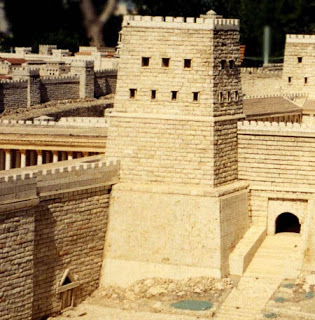
70 The Tower of Antonia, military barracks built by Herod the Great in Jerusalem, and named after Herod's patron Mark Antony, was destroyed by Titus' army during the siege of Jerusalem.
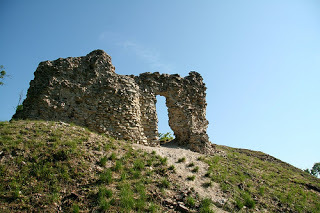
1220 Sweden was defeated by Estonian tribes in the Battle of Lihula. The short-lived Swedish attempt to gain a foothold in Estonia was motivated by the quickly advancing Danish and German crusaders who had been able to conquer most of the area in the early 13th century.
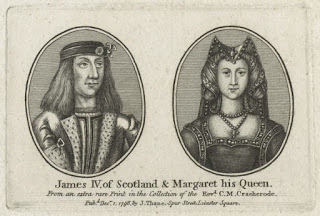
1503 King James IV of Scotland married Margaret Tudor, daughter of King Henry VII of England at Holyrood Abbey, Edinburgh, Scotland.

70 The Tower of Antonia, military barracks built by Herod the Great in Jerusalem, and named after Herod's patron Mark Antony, was destroyed by Titus' army during the siege of Jerusalem.

1220 Sweden was defeated by Estonian tribes in the Battle of Lihula. The short-lived Swedish attempt to gain a foothold in Estonia was motivated by the quickly advancing Danish and German crusaders who had been able to conquer most of the area in the early 13th century.

1503 King James IV of Scotland married Margaret Tudor, daughter of King Henry VII of England at Holyrood Abbey, Edinburgh, Scotland.
Published on August 08, 2015 01:30
August 7, 2015
Precious Treasures from Ancient Heracleion to be Revealed
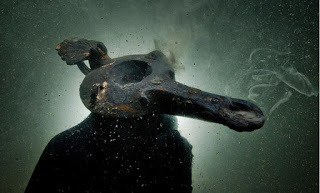 Ancient Origins
Ancient OriginsArtifacts from the Egyptian city of Thonis-Heracleion, once thought to be little more than a legend, will be displayed at an exhibition in Paris in September. The treasures include a fine sculpture of a pharaoh and a depiction of the god Osiris with golden eyes. These are just two of the artifacts discovered underwater in the submerged ruins of Thonis-Heracleion and Canopus, both of which disappeared in the 8th century after being struck by tidal waves caused by an earthquake. The main cause of this disaster was is thought to be liquefaction of the silt upon which the cities were built, causing them to sink by around 12 feet.
The cities are located beneath the surface in Aboukir Bay near Alexandria and have recently been subjected to excavations by French marine archaeologist Franck Goddio, who is the Founding head of the European Institute for Underwater Archaeology in Paris. The remains of the cities cover 40 square miles (110 square kilometers) of seabed and were initially discovered by Mr. Goddio in 2000. At the time, this was considered as one of the greatest archaeological discoveries of modern times, resulting in the identification of colossal statues and the discovery of ancient coins and jewelry, artifacts indicating a considerable level of opulence at the height of this civilizations history.
 Ptolemaic coins found at the submerged site of Thonis-Heracleion, Alexandria, Egypt (
Wikimedia Commons
) Thonis-Heracleion, a conjunction of the city’s Egyptian and Greek names, was once incredibly prosperous. The city was founded in the 8th century BC and consisted of a network of canals and a port that served as an important gateway to Ancient Egypt. It also became the most important city in the Mediterranean in terms of international trading. Mr. Goddio’s team discovered more than 700 anchors and 60 wrecks dating from the sixth to the second century BC.
Ptolemaic coins found at the submerged site of Thonis-Heracleion, Alexandria, Egypt (
Wikimedia Commons
) Thonis-Heracleion, a conjunction of the city’s Egyptian and Greek names, was once incredibly prosperous. The city was founded in the 8th century BC and consisted of a network of canals and a port that served as an important gateway to Ancient Egypt. It also became the most important city in the Mediterranean in terms of international trading. Mr. Goddio’s team discovered more than 700 anchors and 60 wrecks dating from the sixth to the second century BC.“There will be many important artifacts which have never been seen before, even in Egypt, as they have been discovered recently during our underwater missions” Goddio said, speaking to The Guardian.
 Statue being uncovered during the underwater mission, Alexandria, Egypt (
IMGUR
)Dr Daimian Robinson, Director of the Oxford Centre for Maritime Archaeology at the University of Oxford, added that within the submerged area there are probably two, or possibly three ancient cities, of which perhaps only 2% at most has been investigated so far. The main effort has been focused on surveying the site to assess the topography, accompanied by a few exploratory excavations for clarification of particular research questions.
Statue being uncovered during the underwater mission, Alexandria, Egypt (
IMGUR
)Dr Daimian Robinson, Director of the Oxford Centre for Maritime Archaeology at the University of Oxford, added that within the submerged area there are probably two, or possibly three ancient cities, of which perhaps only 2% at most has been investigated so far. The main effort has been focused on surveying the site to assess the topography, accompanied by a few exploratory excavations for clarification of particular research questions. Top Ten Ancient Egyptian Discoveries of 2014Egyptian Alexandria - Ancient underwater finds revealed the Pharaonic roots of the Ptolemaic CityTen incredible underwater discoveries that have captured our imaginationAncient Egyptian City of Heracleion - on the border between myth and realityPrior to its discovery, the city’s memory was preserved only through ancient texts, such as those of the Greek historian Herodotus who mentioned that the city once had a great temple and had been visited by Helen of Troy and her lover, Paris. The city of Canopus nearby also appears in ancient writing, notably that of second century BC poet Nicander who wrote that Menelaus’s helmsman, Canopus, was bitten by a viper at this location. Diodorus and Strabo also mentioned the cities in their writing.
 The Love of Helen and Paris, Jacques-Louis David (1788) (
Wikimedia Commons
)The cities were also famous for their sanctuaries, devoted to Osiris and other Egyptian deities and known for their miraculous healing powers. The Temple of Khonsou, son of the god Amun, was also located there. The discovery of artifacts at these locations correlate with texts and inscriptions, including the Decree of Canopus, preserved on a stela from 238 BC that describes donations, sacrifices and a procession of ships.
The Love of Helen and Paris, Jacques-Louis David (1788) (
Wikimedia Commons
)The cities were also famous for their sanctuaries, devoted to Osiris and other Egyptian deities and known for their miraculous healing powers. The Temple of Khonsou, son of the god Amun, was also located there. The discovery of artifacts at these locations correlate with texts and inscriptions, including the Decree of Canopus, preserved on a stela from 238 BC that describes donations, sacrifices and a procession of ships.Goddio explained that unique artifacts “not known before and not represented in any museum,” such as ritual ceremonial barges have also been discovered at the site along with a black granite carving of a priest’s head and a ceramic depicting Bes, a god who protected people against evil spirits.
 Granite head of a priest discovered in the submerged ruins of Thonis-Heracleion, Alexandria, Egypt (Cristoph Gerigk)The artifacts will be presented to the public at an exhibition at the Arab World Institute in Paris from September 8 - January 31, 2016 entitled Osiris, Sunken Mysteries of Egypt. It will incorporate more than 290 artifacts with film footage depicting the underwater atmosphere of the site. Other artifacts will be loaned to the exhibition from museums in Cairo and Alexandria.
Granite head of a priest discovered in the submerged ruins of Thonis-Heracleion, Alexandria, Egypt (Cristoph Gerigk)The artifacts will be presented to the public at an exhibition at the Arab World Institute in Paris from September 8 - January 31, 2016 entitled Osiris, Sunken Mysteries of Egypt. It will incorporate more than 290 artifacts with film footage depicting the underwater atmosphere of the site. Other artifacts will be loaned to the exhibition from museums in Cairo and Alexandria.By Robin Whitlock
Featured Image: Oil lamp discovered in the submerged ruins of Thonis-Heracleion, Alexandria, Egypt (Cristoph Gerigk)
Published on August 07, 2015 08:51
Interview with B.R.A.G. Medallion Honoree Elizabeth Marrion August 6, 2015
Interviews, Book Reviews, Guest Post and More! Interview with B.R.A.G. Medallion Honoree Elizabeth Marrion August 6, 2015Layered Pages
Interview with B.R.A.G. Medallion Honoree Elizabeth Marrion August 6, 2015Layered Pages
 I’d like to welcome B.R.A.G. Medallion Honoree Elisabeth Marrion to talk with me today about her book, Liverpool Connection. Elizabeth was born August 1948, in Hildesheim Germany. Her father was a Corporal in the Royal Air Force and stationed after the War in the British occupied zone in Germany, where he met her mother Hilde, a War Widow.
I’d like to welcome B.R.A.G. Medallion Honoree Elisabeth Marrion to talk with me today about her book, Liverpool Connection. Elizabeth was born August 1948, in Hildesheim Germany. Her father was a Corporal in the Royal Air Force and stationed after the War in the British occupied zone in Germany, where he met her mother Hilde, a War Widow.
As a teenager she enjoyed reading novels and plays by Oscar Wilde, Thornton Wilder and never lost her love of reading novels by Ernest Hemingway, or short stories by Guy de Maupassant. More recently she felt inspired by Rabbit-proof Fence, a true story written by Doris Pilkington.
Elisabeth moved to England in 1969, where she met her husband David. Together they established a clothing importing company. Their business gave them the opportunity to travel and work in the Sub Continent and the Far East. A large part of their working life was spent in Bangladesh, where both helped to establish a school in the rural part of the Country, training young people in trades such as sign writing, electrical work and repair of computers and televisions.
Elisabeth discovered her love for writing relatively late, but the good thing is, now she doesn’t seem to be able to stop.
For inspiration she put on her running shoes for a long coastal run at the New Forest, where she now lives.
How did you discover IndieBRAG
First of all, I must thank you Stephanie, for taking time to talk with me.
I discovered indieBRAG through several ways really, but I will just mention three, which are: through my wonderful publishing team at SilverWood, who encourage each writer to spread themselves as far across the spectrum as possible; through writer Debbie Brown, from the English Historical Fiction Authors; and of course writer Helen Hollick from the HNS. Both Debbie and Helen provide the writers with updates via the Social Media to ensure they are aware of all the possibilities out there.
Tell me about your book, Liverpool Connection
Liverpool Connection is Annie’s story. Annie, like her sisters before her, leaves Ireland together with her ever-optimistic friend Flo, to find a better life in Liverpool. Only things do not turn out they way she had imagined. Soon Annie falls in love, marries and starts a family of her own. But with the onset of World War II comes tragedy and loss, testing Annie’s strength to her limit. Little does she realise that the salvation of one of her loved ones, lies with Hilde, a German woman, whose life and situation mirrors Annie’s own.
Why did Annie and her friend chose Liverpool to find a better life?
There was very little work available in Ballyshannon at that time. Yarn and Textile Mills were in decline. Annie dreamed of life in a big city and had the security of her sisters living and working there already. So what could possible go wrong ?
Why did you chose 1926 as the opening period for your story? Is there any historical significance?
Liverpool Connection is based upon a true story and Annie left Ireland in the 1920’s. I then picked the year to be 1926, which was the same year as Hilde, the German woman, leaves the security of her home in Prussia to work in a household in Berlin.
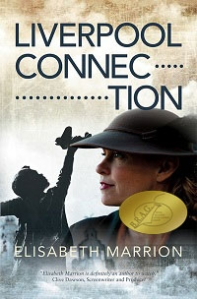 Tell me a little about the German woman, Hilde, that Annie meets.
Tell me a little about the German woman, Hilde, that Annie meets.
Annie and Hilde never meet in person but the connection between them was through Joseph, a young Corporal in the RAF, who is looking for his friend, Annie’s brother-in-law. His plane was shot down over Hildesheim where Hilde lived. Hilde was my mother and Joseph was my father.
Could you please share an excerpt?
“Dorothy. Run!” She managed to shout before she started to cough.
Aircraft noises drowned out Annie’s instructions. She hurried after Dorothy. A whistling sound, silence, then a massive boom, which seemed to be really close by. The earth shook under her feet, and Annie fell to the ground, dropping Derek when she fell.
“Derek!” Nobody heard Annie’s cry for help. She was alone, lying on the ground, unable to move. From fear or shock, she did not know, but her legs refused to carry her weight. There was burning rubble near to where Derek had fallen. He managed to get up by himself. Covered in dirt, he toddled over to where she lay. He did not cry, just sat on the ground next to Annie. The planes came back. She imagined them to be somewhere right above her in the dark sky. She pulled Derek over by his arm. And covered him with her body as best she could. One arm over Derek and with the other shielding her head. Noises, threatening noises. Deafening sounds. The earth underneath would not keep still. And hot, so hot. My children, I hope they are safe. She must have said it out loud. She felt somebody pulling her at the back of the coat.
Who designed the cover of your book?
The wonderful creative team from SilverWood. I was asked whether I had my own idea and supplied just a tiny bit and then ‘voila’ the cover arrived.
How did you come up with the title for your book?
Since the story runs side-by-side with my first book, ‘ The Night I danced with Rommel’ and the connection between the two books is Liverpool, the title could only be this one.
Where can readers buy your book?
It can be bought via Amazon, printed, kindle and audio.
Barnes & Noble
Plus Bookstores in the UK.
When you get stuck on a scene what do you do?
I get up and walk around. In extreme cases, I put my running shoes on and go for a run on the coastal path. This is something I have always done when I have had to solve a problem.
What you working on next?
So much for the Unbroken Bonds series being a trilogy. It is my late husband David’s fault really. When I read the final chapter and epilogue to him from Cuckoo Clock-New York, he asked me what was happening to Thomas. Yes, you may well ask. You will have to find out in Welcome to Singapore, the prologue of which will be in the forthcoming book.
Are you sticking with just one genre?
No, I had already started with a totally different idea. But now, thanks to David, I will have to tell Thomas’s story first.
Where do you write?
I like to get up early, usually around 5am. I make myself a cup of really strong coffee and take it into my office. I first go over the chapter I wrote the day before and make adjustments. I then start on the next chapter. I write about 800 – 900 words a day. I have this habit of getting up every so often, walking around.-to clear my head a presume. Then I sit down and carry on.
Author Links: WebsiteWriters Room A Message from indieBRAG:
We are delighted that Stephanie has chosen to interview Elizabeth Marrion who is the author of, Liverpool Connection, our medallion honoree at indieBRAG . To be awarded a B.R.A.G. Medallion TM, a book must receive unanimous approval by a group of our readers. It is a daunting hurdle and it serves to reaffirm that a book such as, Liverpool Connection, merits the investment of a reader’s time and money.
 Interview with B.R.A.G. Medallion Honoree Elizabeth Marrion August 6, 2015Layered Pages
Interview with B.R.A.G. Medallion Honoree Elizabeth Marrion August 6, 2015Layered Pages  I’d like to welcome B.R.A.G. Medallion Honoree Elisabeth Marrion to talk with me today about her book, Liverpool Connection. Elizabeth was born August 1948, in Hildesheim Germany. Her father was a Corporal in the Royal Air Force and stationed after the War in the British occupied zone in Germany, where he met her mother Hilde, a War Widow.
I’d like to welcome B.R.A.G. Medallion Honoree Elisabeth Marrion to talk with me today about her book, Liverpool Connection. Elizabeth was born August 1948, in Hildesheim Germany. Her father was a Corporal in the Royal Air Force and stationed after the War in the British occupied zone in Germany, where he met her mother Hilde, a War Widow.As a teenager she enjoyed reading novels and plays by Oscar Wilde, Thornton Wilder and never lost her love of reading novels by Ernest Hemingway, or short stories by Guy de Maupassant. More recently she felt inspired by Rabbit-proof Fence, a true story written by Doris Pilkington.
Elisabeth moved to England in 1969, where she met her husband David. Together they established a clothing importing company. Their business gave them the opportunity to travel and work in the Sub Continent and the Far East. A large part of their working life was spent in Bangladesh, where both helped to establish a school in the rural part of the Country, training young people in trades such as sign writing, electrical work and repair of computers and televisions.
Elisabeth discovered her love for writing relatively late, but the good thing is, now she doesn’t seem to be able to stop.
For inspiration she put on her running shoes for a long coastal run at the New Forest, where she now lives.
How did you discover IndieBRAG
First of all, I must thank you Stephanie, for taking time to talk with me.
I discovered indieBRAG through several ways really, but I will just mention three, which are: through my wonderful publishing team at SilverWood, who encourage each writer to spread themselves as far across the spectrum as possible; through writer Debbie Brown, from the English Historical Fiction Authors; and of course writer Helen Hollick from the HNS. Both Debbie and Helen provide the writers with updates via the Social Media to ensure they are aware of all the possibilities out there.
Tell me about your book, Liverpool Connection
Liverpool Connection is Annie’s story. Annie, like her sisters before her, leaves Ireland together with her ever-optimistic friend Flo, to find a better life in Liverpool. Only things do not turn out they way she had imagined. Soon Annie falls in love, marries and starts a family of her own. But with the onset of World War II comes tragedy and loss, testing Annie’s strength to her limit. Little does she realise that the salvation of one of her loved ones, lies with Hilde, a German woman, whose life and situation mirrors Annie’s own.
Why did Annie and her friend chose Liverpool to find a better life?
There was very little work available in Ballyshannon at that time. Yarn and Textile Mills were in decline. Annie dreamed of life in a big city and had the security of her sisters living and working there already. So what could possible go wrong ?
Why did you chose 1926 as the opening period for your story? Is there any historical significance?
Liverpool Connection is based upon a true story and Annie left Ireland in the 1920’s. I then picked the year to be 1926, which was the same year as Hilde, the German woman, leaves the security of her home in Prussia to work in a household in Berlin.
 Tell me a little about the German woman, Hilde, that Annie meets.
Tell me a little about the German woman, Hilde, that Annie meets. Annie and Hilde never meet in person but the connection between them was through Joseph, a young Corporal in the RAF, who is looking for his friend, Annie’s brother-in-law. His plane was shot down over Hildesheim where Hilde lived. Hilde was my mother and Joseph was my father.
Could you please share an excerpt?
“Dorothy. Run!” She managed to shout before she started to cough.
Aircraft noises drowned out Annie’s instructions. She hurried after Dorothy. A whistling sound, silence, then a massive boom, which seemed to be really close by. The earth shook under her feet, and Annie fell to the ground, dropping Derek when she fell.
“Derek!” Nobody heard Annie’s cry for help. She was alone, lying on the ground, unable to move. From fear or shock, she did not know, but her legs refused to carry her weight. There was burning rubble near to where Derek had fallen. He managed to get up by himself. Covered in dirt, he toddled over to where she lay. He did not cry, just sat on the ground next to Annie. The planes came back. She imagined them to be somewhere right above her in the dark sky. She pulled Derek over by his arm. And covered him with her body as best she could. One arm over Derek and with the other shielding her head. Noises, threatening noises. Deafening sounds. The earth underneath would not keep still. And hot, so hot. My children, I hope they are safe. She must have said it out loud. She felt somebody pulling her at the back of the coat.
Who designed the cover of your book?
The wonderful creative team from SilverWood. I was asked whether I had my own idea and supplied just a tiny bit and then ‘voila’ the cover arrived.
How did you come up with the title for your book?
Since the story runs side-by-side with my first book, ‘ The Night I danced with Rommel’ and the connection between the two books is Liverpool, the title could only be this one.
Where can readers buy your book?
It can be bought via Amazon, printed, kindle and audio.
Barnes & Noble
Plus Bookstores in the UK.
When you get stuck on a scene what do you do?
I get up and walk around. In extreme cases, I put my running shoes on and go for a run on the coastal path. This is something I have always done when I have had to solve a problem.
What you working on next?
So much for the Unbroken Bonds series being a trilogy. It is my late husband David’s fault really. When I read the final chapter and epilogue to him from Cuckoo Clock-New York, he asked me what was happening to Thomas. Yes, you may well ask. You will have to find out in Welcome to Singapore, the prologue of which will be in the forthcoming book.
Are you sticking with just one genre?
No, I had already started with a totally different idea. But now, thanks to David, I will have to tell Thomas’s story first.
Where do you write?
I like to get up early, usually around 5am. I make myself a cup of really strong coffee and take it into my office. I first go over the chapter I wrote the day before and make adjustments. I then start on the next chapter. I write about 800 – 900 words a day. I have this habit of getting up every so often, walking around.-to clear my head a presume. Then I sit down and carry on.
Author Links: WebsiteWriters Room A Message from indieBRAG:
We are delighted that Stephanie has chosen to interview Elizabeth Marrion who is the author of, Liverpool Connection, our medallion honoree at indieBRAG . To be awarded a B.R.A.G. Medallion TM, a book must receive unanimous approval by a group of our readers. It is a daunting hurdle and it serves to reaffirm that a book such as, Liverpool Connection, merits the investment of a reader’s time and money.
Published on August 07, 2015 05:31
History Trivia - Henry VII's army lands in Milford Harbor
August 7
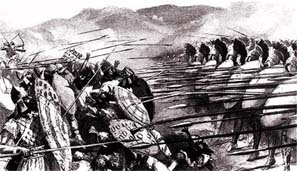
322 BC Battle of Crannon: Macedonian forces of Antipater and Craterus and rebellious Greek forces led by the Athenians, was the decisive battle of the Lamian War, following the death of Alexander the Great. The Greeks sued for peace which marked the end of city-state freedom from Macedonian hegemony in Greece.
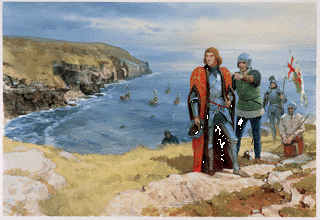
1485 Henry VII's army landed in Milford Harbor, South-Wales, a Lancastrian stronghold, and amassed an army to seize the crown from Richard III who was defeated at the Battle of Bosworth Field on August 22, 1485.
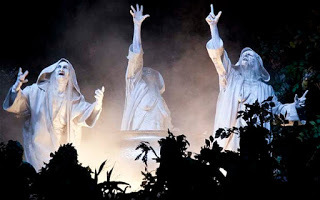
1606 The first documented performance of Macbeth was performed at the Great Hall at Hampton Court.

322 BC Battle of Crannon: Macedonian forces of Antipater and Craterus and rebellious Greek forces led by the Athenians, was the decisive battle of the Lamian War, following the death of Alexander the Great. The Greeks sued for peace which marked the end of city-state freedom from Macedonian hegemony in Greece.

1485 Henry VII's army landed in Milford Harbor, South-Wales, a Lancastrian stronghold, and amassed an army to seize the crown from Richard III who was defeated at the Battle of Bosworth Field on August 22, 1485.

1606 The first documented performance of Macbeth was performed at the Great Hall at Hampton Court.
Published on August 07, 2015 01:00
August 6, 2015
History Trivia - Francis II, the last Holy Roman Emperor, abdicates
August 6
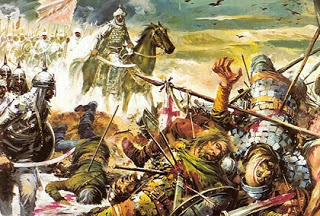
939 Battle at Simancas - Spain defeated the Moors. Arab witnesses reported a spectacular eclipse of the sun that took place on the first day of the battle, a bad omen.
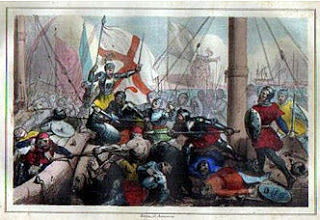 1284 The Republic of Pisa was defeated in the Battle of Meloria by the Republic of Genoa, thus losing its naval dominance in the Mediterranean.
1284 The Republic of Pisa was defeated in the Battle of Meloria by the Republic of Genoa, thus losing its naval dominance in the Mediterranean.
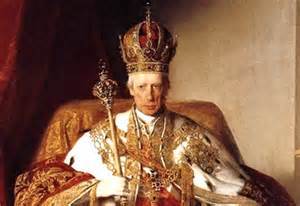 1806 Francis II, the last Holy Roman Emperor, abdicated, ending the Holy Roman Empire.
1806 Francis II, the last Holy Roman Emperor, abdicated, ending the Holy Roman Empire.

939 Battle at Simancas - Spain defeated the Moors. Arab witnesses reported a spectacular eclipse of the sun that took place on the first day of the battle, a bad omen.
 1284 The Republic of Pisa was defeated in the Battle of Meloria by the Republic of Genoa, thus losing its naval dominance in the Mediterranean.
1284 The Republic of Pisa was defeated in the Battle of Meloria by the Republic of Genoa, thus losing its naval dominance in the Mediterranean.  1806 Francis II, the last Holy Roman Emperor, abdicated, ending the Holy Roman Empire.
1806 Francis II, the last Holy Roman Emperor, abdicated, ending the Holy Roman Empire.
Published on August 06, 2015 01:00
August 5, 2015
Ancient Irish Were the First Known to Mark an Eclipse in Stone
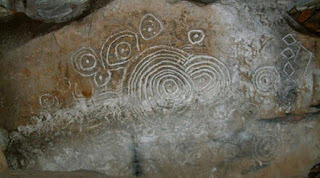 More than 5,000 years ago people in Ireland carved a representation of an eclipse into three stones at a megalithic monument—the first known recording of a solar eclipse, scholars say. Researchers have further noted that the sun shines into a chamber of this monument in County Meath on the later ancient Celtic festivals of Samhain and Imbolc.
More than 5,000 years ago people in Ireland carved a representation of an eclipse into three stones at a megalithic monument—the first known recording of a solar eclipse, scholars say. Researchers have further noted that the sun shines into a chamber of this monument in County Meath on the later ancient Celtic festivals of Samhain and Imbolc.IrishCentral reports:
Our ancient Irish ancestors carved images of an ancient eclipse into giant stones over 5,000 years ago, on November 30, 3340 BC to be exact. This is the oldest known recorded solar eclipse in history. The illustrations are found on the Stone Age “Cairn L,” on Carbane West, at Loughcrew, outside Kells, in County Meath. The landscape of rolling hills is littered with Neolithic monuments. Some say that originally there were at least 40 to 50 monuments, but others say the figure was more like 100.“Cairn L” received a mention in Astronomy Ireland’s article: “Irish Recorded Oldest Known Eclipse 5355 Years Ago.” They write that the Irish Neolithic astronomer priests recorded the events on three stones relating to the eclipse, as seen from that location.Researchers Jack Roberts and Martin Brennan found the sun illuminates a chamber in the monuments on November 1 and February 2, the cross-quarter days, which marked dates halfway between solstices and equinoxes.
 A solar eclipse, May 20, 2012 (Photo by Brocken Inaglory/
Wikimedia Commons
)November 1 is the end of summer, which is what Samhain means. The ancient Celts, who came later than the people who made the eclipse carving, considered Samhain the beginning of winter. Christians call it All Saints Day.
A solar eclipse, May 20, 2012 (Photo by Brocken Inaglory/
Wikimedia Commons
)November 1 is the end of summer, which is what Samhain means. The ancient Celts, who came later than the people who made the eclipse carving, considered Samhain the beginning of winter. Christians call it All Saints Day.Ancient Myths and Legends Served to Explain the Startling Phenomenon of Solar EclipseDoes Oldest Written Text Reveal a 30,000 year old Cult that Worshipped the Prediction of Eclipses?Do the ancient stone walls of Saksaywaman in Peru contain hidden communication?February 2, or Imbolc, is midway between the winter solstice and the spring equinox. It was later celebrated by Christians as Candlemas and in Ireland as St. Brigit's Day. The Celts called it the Festival of Lights and lit every candle and lamp in the house to commemorate the rebirth of the sun. Christians too celebrated February 2 with lights. On that day candles were lit in churches to celebrate the presentation of Jesus Christ in the Jerusalem temple.
The Irish called it Imbolc (“lamb's milk”) because it was when lambing season started.
“It was also called Brigantia for the Celtic female deity of light, calling attention to the Sun's being halfway on its advance from the winter solstice to the spring equinox,” Alamanac.com explains.
 Angels take St. Bride or Brigit, a Catholicized ancient Celtic goddess of light, to Bethlehem to foster the Christ child, John Duncan (Sofi/Flickr)Imbolc is also called Brigit's Day. Brigit means The Bright One. This sun goddess, later subsumed into the Catholic roster of saints, presided over the forge and hearth, crops, livestock and nature and also inspired skills of sacred arts and crafts, according to Celticatlanta.com.
Angels take St. Bride or Brigit, a Catholicized ancient Celtic goddess of light, to Bethlehem to foster the Christ child, John Duncan (Sofi/Flickr)Imbolc is also called Brigit's Day. Brigit means The Bright One. This sun goddess, later subsumed into the Catholic roster of saints, presided over the forge and hearth, crops, livestock and nature and also inspired skills of sacred arts and crafts, according to Celticatlanta.com.Irish Central reports that many people believe the Celts invented the Festival of Lights to welcome the eclipse. They are also believed to have predicted when the eclipse would happen.
Brennan and Roberts noted the sun may not have shown into the chamber on Samhain and Imbolc when the Celts built it in 3340 BC.
In addition, Brennan and Roberts observed full moonlight illuminating the end of the cairn, where light shone on a cup mark on the endstone on August 26, 1980. Then, as the light moved across the chamber, it illuminated the bottom of the Whispering Stone.
“The 3340 BC eclipse is the only eclipse that fits out of the 92 solar eclipses in history tracked by Irish archaeoastronomer expert, Paul Griffin,” Irish Central says. “With none of the technology available to our modern experts the ancient Irish constructed these complex structures, that not only endured over 5,000 years, but were built with such accuracy that they continue to perform their astronomical functions today.”Within Cairn L is a tall stone pillar called the Whispering Stone, 2 meters tall (7 feet). Irish Central believes that the chamber and cairn were built to house the Whispering Stone.
Featured image: One of the Loughcrew eclipse rocks (IrishCentral)
By Mark Miller
Ancient Origins
Published on August 05, 2015 06:31
History Trivia - William Wallace captured by the English
August 5
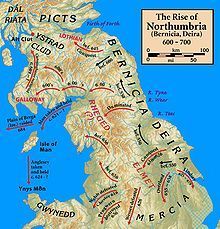
642 – Battle of Maserfield – Penda of Mercia defeated and killed Oswald of Bernicia (Northumbria).
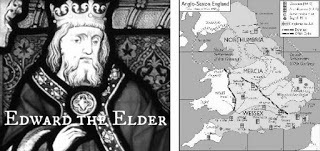
910 The last major Danish army to raid England was defeated at the Battle of Tettenhall by the allied forces of Mercia and Wessex, led by King Edward the Elder and Earl Aethelred of Mercia.
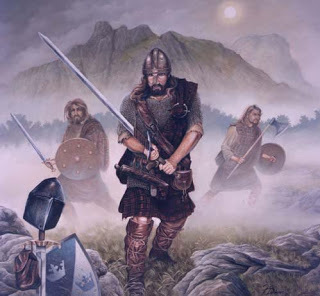
1305 William Wallace, who led the Scottish resistance against England, was captured by the English near Glasgow and transported to London where he was put on trial and executed.

642 – Battle of Maserfield – Penda of Mercia defeated and killed Oswald of Bernicia (Northumbria).

910 The last major Danish army to raid England was defeated at the Battle of Tettenhall by the allied forces of Mercia and Wessex, led by King Edward the Elder and Earl Aethelred of Mercia.

1305 William Wallace, who led the Scottish resistance against England, was captured by the English near Glasgow and transported to London where he was put on trial and executed.
Published on August 05, 2015 01:00



